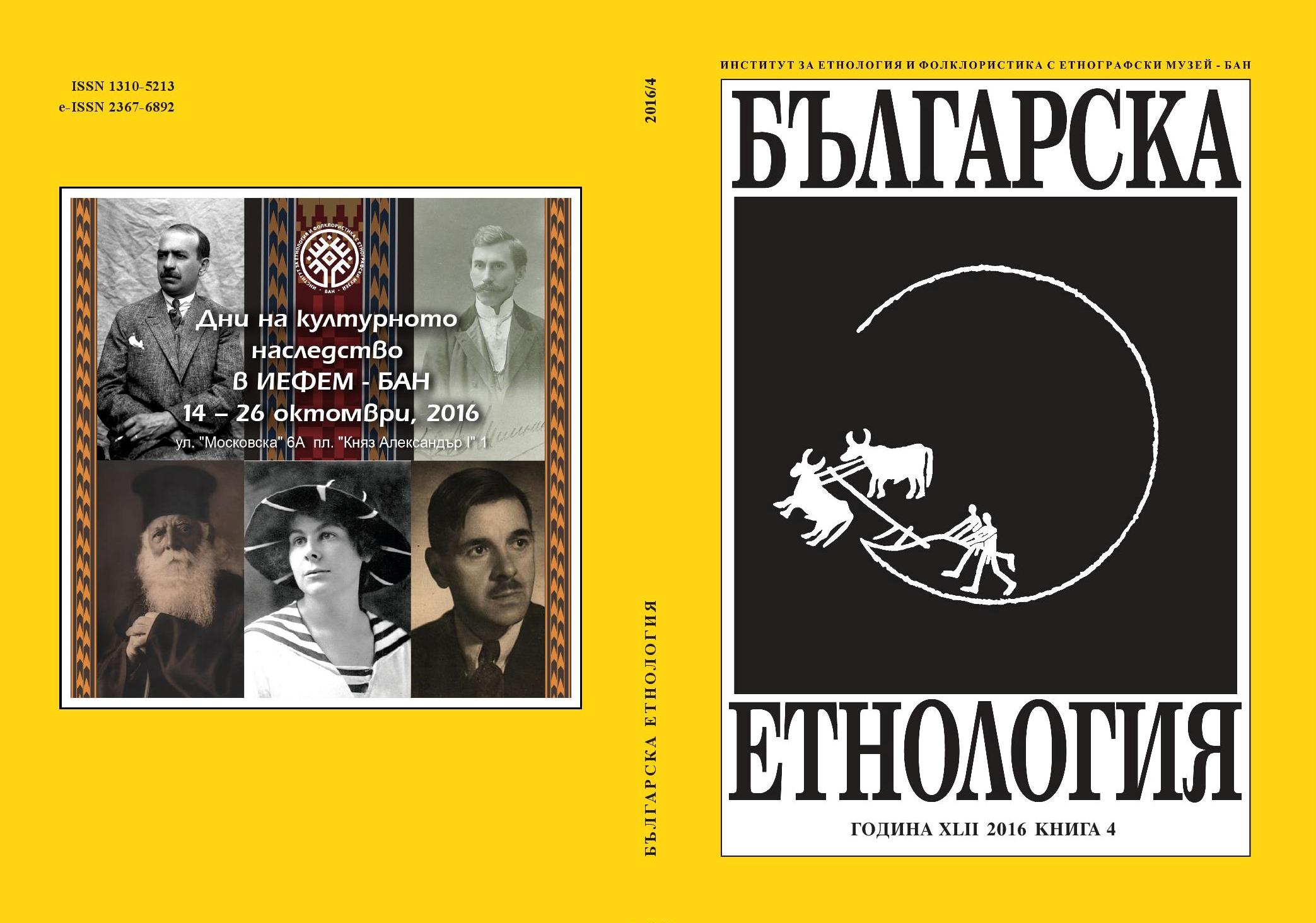
We kindly inform you that, as long as the subject affiliation of our 300.000+ articles is in progress, you might get unsufficient or no results on your third level or second level search. In this case, please broaden your search criteria.


One of the typical and relatively stable features of the everyday life of the Bulgarianimmigrants in the historical and cultural region of Bessarabia are the patronal festivalsand customs held within the frameworks of the village, neighbourhood or familyand referred to as zbor/sabor (збор/събор), hram (храм), kurban (курбан), tsarkva(църква), panagir (панагирь), cherkuvane (черкуване), moleben (молебен) etc. Asfor the designation збор (a fair), it is clear that it precedes the Russian designationхрам (a patron saint’s day) which penetrates the region under study later on andwhich is widely used at present. What stirs up bigger interest is the fact that exceptfor village church festivals this term (as well as some of the other above-mentioned) was also used for intervillage festivals held at the landmark of the territories of two,three or more villages – the so-called fairs at the landmark also known as moleben orcherkuvane for rain and good health.As far as the patron saint’s day is a universal Christian phenomenon and stilla general practice in the villages of the region studied here, it could be assumedthat the gathering itself, the making of zbor (or moleben) at the landmark (at theborder between a group of villages), which is neglected today almost everywhere,is a form typical only of the immigrants (Bulgarians and Gagauzians) in Bessarabia.This practice attracts the attention with respect to its nature and development as partof the all-Bulgarian system of patronal village festivals as well as with relation tothe influences, changes and specifics through which it inevitably goes under theconditions of the many-tounged and polycultural environment of Bessarabia and theRussian Orthodox Christianity.The fieldwork materials collected so far do not allow a coprehensive and thickdescription of the phenomena intriguing us as well as a more elaborate analysis.That’s why the article only poses the problem or rather interpretes it in connectionwith some concepts of the kin and family-territorial patronal festivals and customswhich were formulated a long time ago in the Bulgarian science but which are stillrelevant.
More...
On the basis of written sources and field materials, the article examines the phenomenonof the “Odessa cuisine” as a regional complex of food. In the context of thehistorical dynamics, it shows the role of the Balkan traditions in the formation anddevelopment of the everyday culture of the inhabitants of Odessa. Special attentionis paid to the current state of the trade subculture and, respectively, to the systemof the food traditions in Odessa. In particular, the article shows that there are manyproducts introduced by natives from the Balkans (first of all, Greeks and Bulgarians):eggplants, tomatoes, cheese, corn, mutton, grapes, etc. The regional dishes perceivedas “Odessaian” but having roots in the ethno-cultures of the above-mentioned communities,are developed on this basis. The text shows also the “blue” (eggplants) invarious variations of preparation and the “pshonka” (corn). Beside the national, theprofessional mass cuisine is also analyzed (restaurant); in it the Balkan substratumhas found its place a long time ago along with the Jewish, Ukrainian and Moldavian.In the menu of these institutions, there are surely a number of dishes with Balkanorigins. On the other hand, it is worth characterizing the special national restaurantsof Odessa (Bulgarian, Gagauzian, Greek).
More...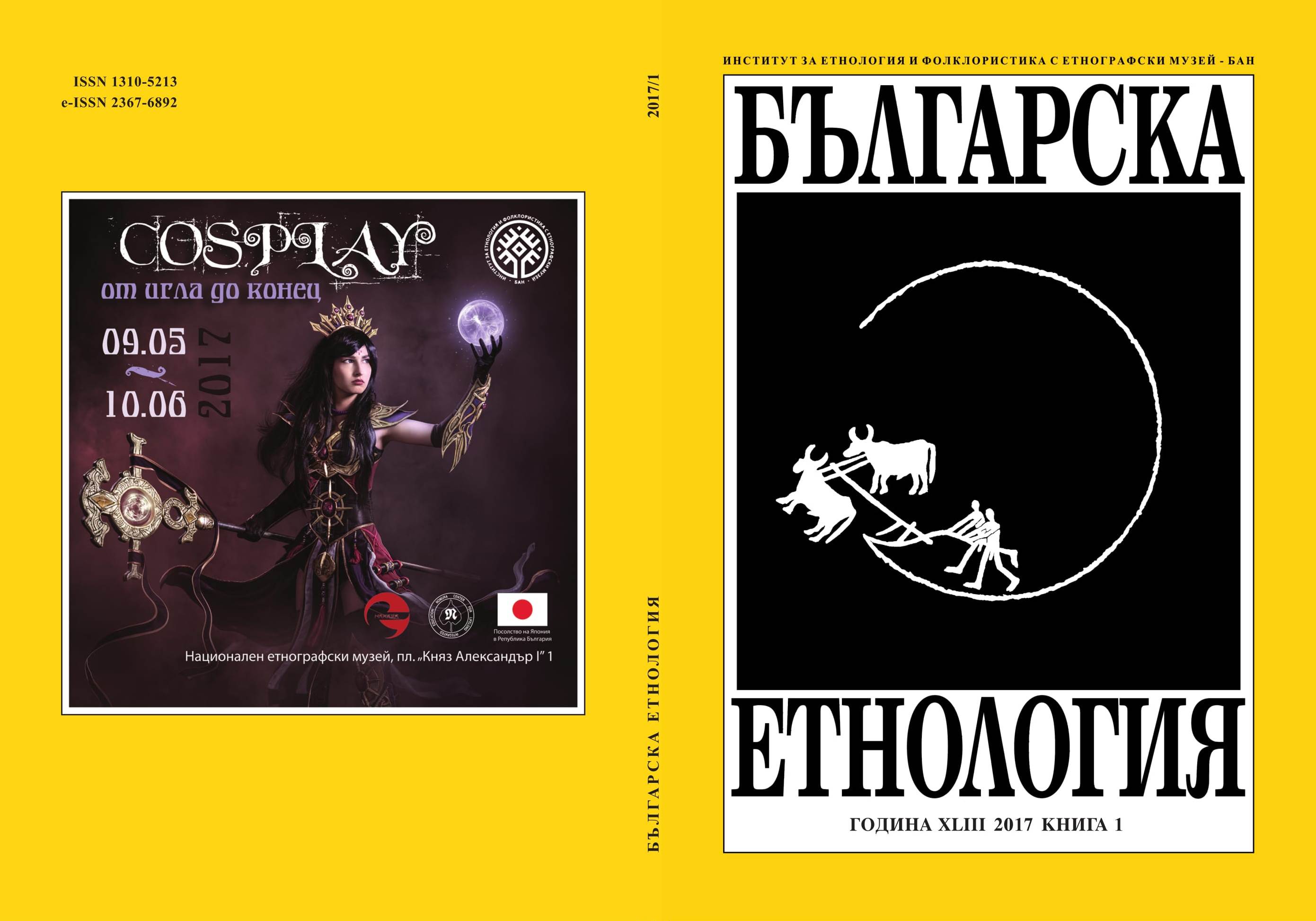
The article makes a brief historical review of the development of Roma publicationsin the countries in Eastern Europe by emphasizing the processes in each country andthe interrelations between their policies regarding the Roma culture and the Roma literary production. The aim of the article is to show that the development of Roma literature is related to the political, social and cultural context in the country or region of its creation. The comparative historical approach is the most appropriate for the purpose since the tendencies in the development of the Roma literature are related to the policies of identity (in general or directed to the Roma population) in different historical periods and regions.
More...
The purpose of the present article is to trace the history and to show the activities performedby the gypsies/Romani organizations in Shumen, Bulgaria during the period between 1944 and 1990. The history of these organizations is going through several periods which match the political periods regarding the gypsy population in Bulgaria.It was founded in 1946, when Bulgaria was leading a policy of ethnical recognition of the gypsies and a wide consideration of their cultural and historical identity. Inthe beginning of the 1950s, due to the fear of the so-called “turcheene” (i.e. public demonstration of the Turkish ethnic identity) among a large part of the gypsies, there was a turning-point in the public policy – the Cultural and Educational organization of the gypsies was forbidden and they got into the hands of the “Fatherland Front” (“Otechestven front”). In spite of the restrictions and interdictions, in 1967 the leaders of the Gypsy movement in Shumen restored their organization by the name of “Roma”, but they didn’t get the recognition and validation from the government. In spite of this, they continued to work for the protection of the Gypsy community in Shumen and in all of their activities in several basic directions (socioeconomic, political, educational and cultural) were performed by the organization’s name. This continued until the beginning of the 1990s, when the organization was recovered, andalong side this a number of new organizations arose.
More...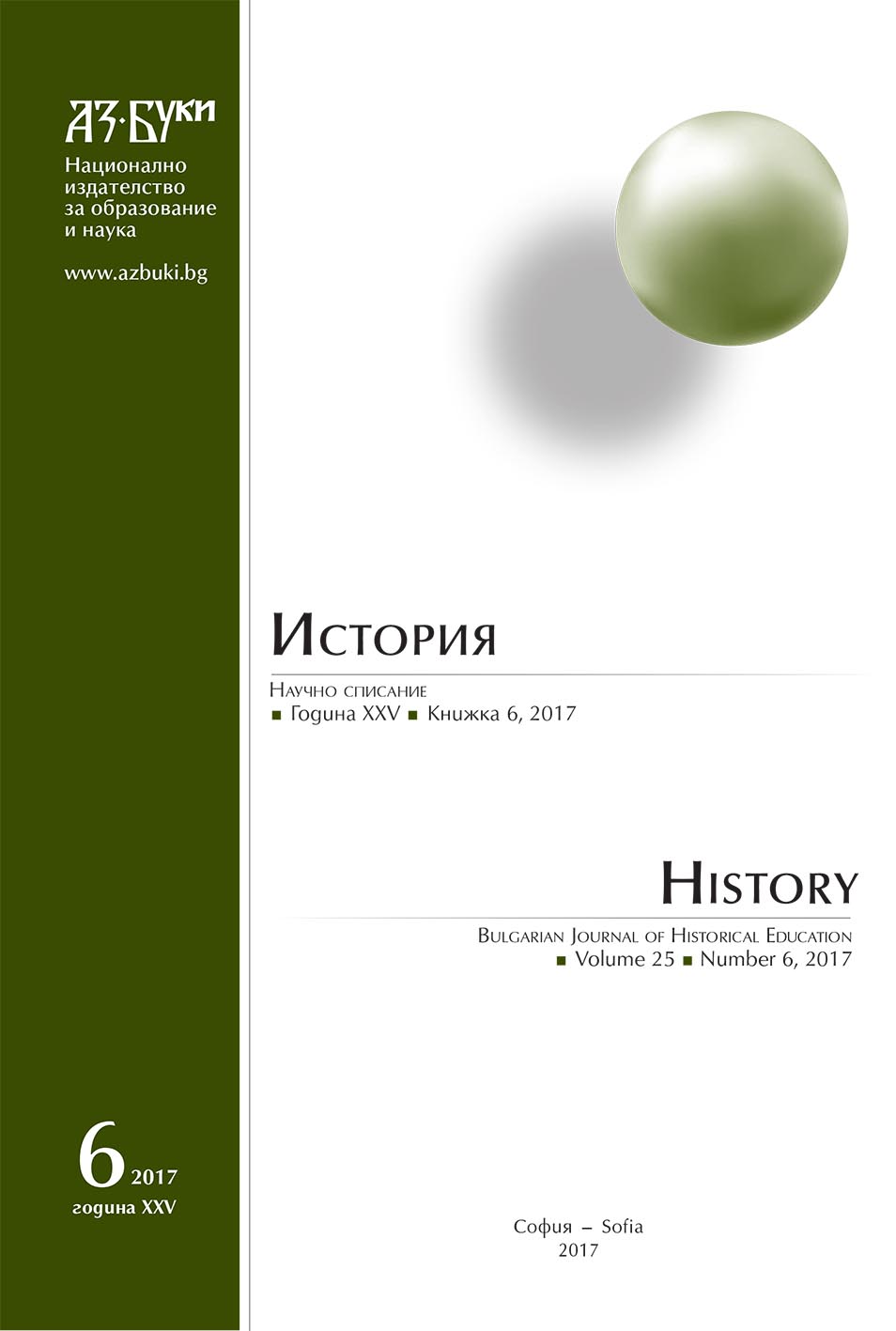
In this paper I briefly investigate the impact of three types of state agricultural policies on rural households in Valchedrum region, North West Bulgaria. I argue that the state remains a key factor, capable to transform the local economies, identities, and everyday life in a few years. I argue that unlike the situation in socialist Bulgaria, when the state lacked resources to implement its policies and had to rely heavily on coercion, the local people have rather limited options for agency now against powerful and efficient EU agricultural policies.
More...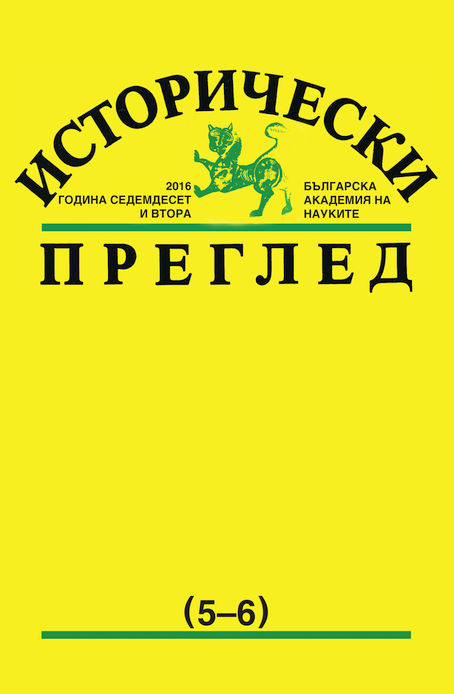
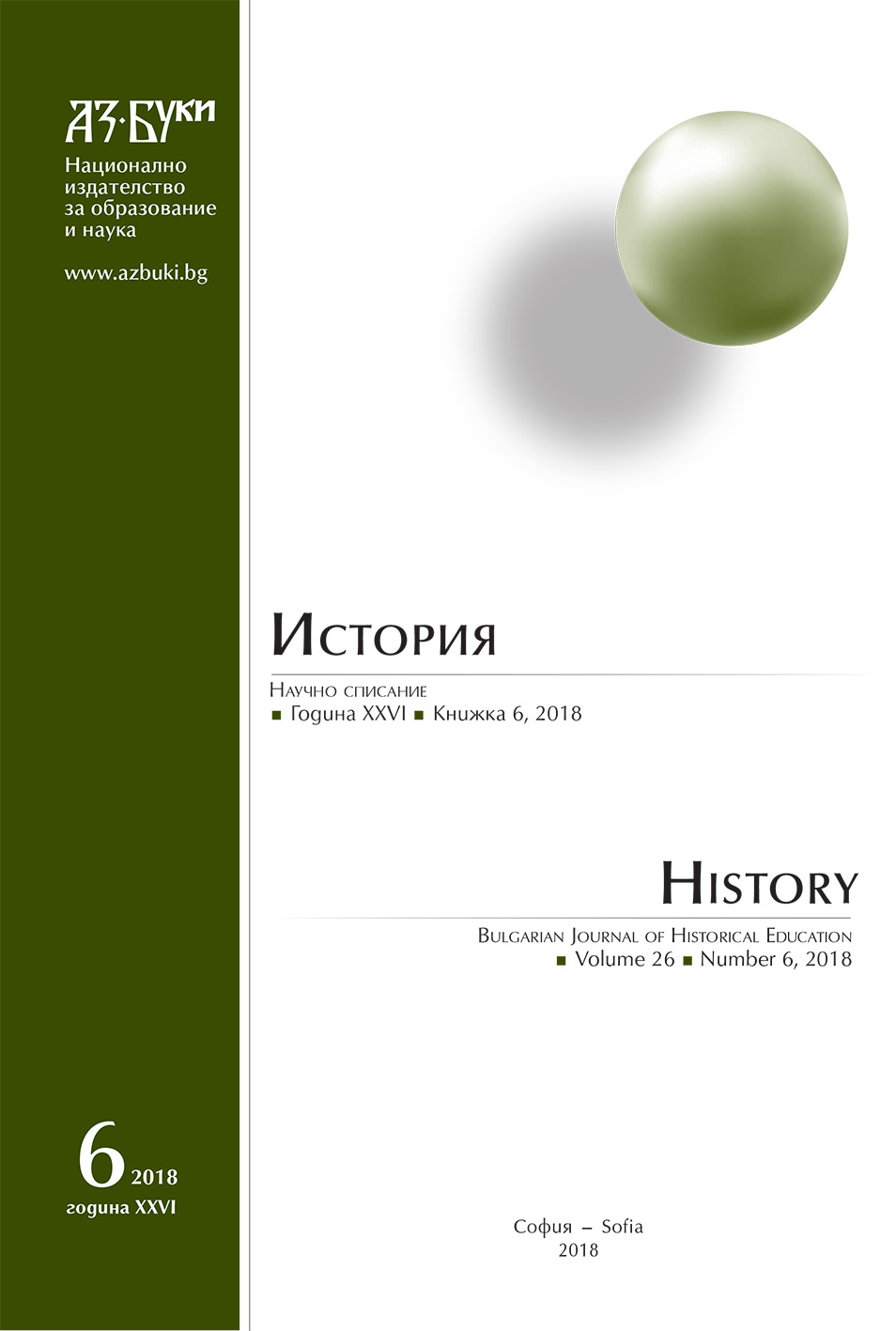
The common enemy of the reborn Poland and the Ukrainian People’s Republic was Bolshevik Russia. On the initiative of the leaders of both countries: Józef Piłsudski and Symon Petlura, an alliance agreement was signed between Poland and the Ukrainian People’s Republic on 22 April 1920. Piłsudski treated cooperation with Ukraine as a key element of his broader plan to rebuild eastern Europe. The result of the concluded alliance was the participation of the Ukrainian army in defense of Poland against the Bolshevik invasion in the summer of 1920. However, the great military victory was largely wasted politically because no Ukrainian state was established. The Treaty of Riga, signed on March 18, 1921, signified de facto defeat of Piłsudski’s plans.
More...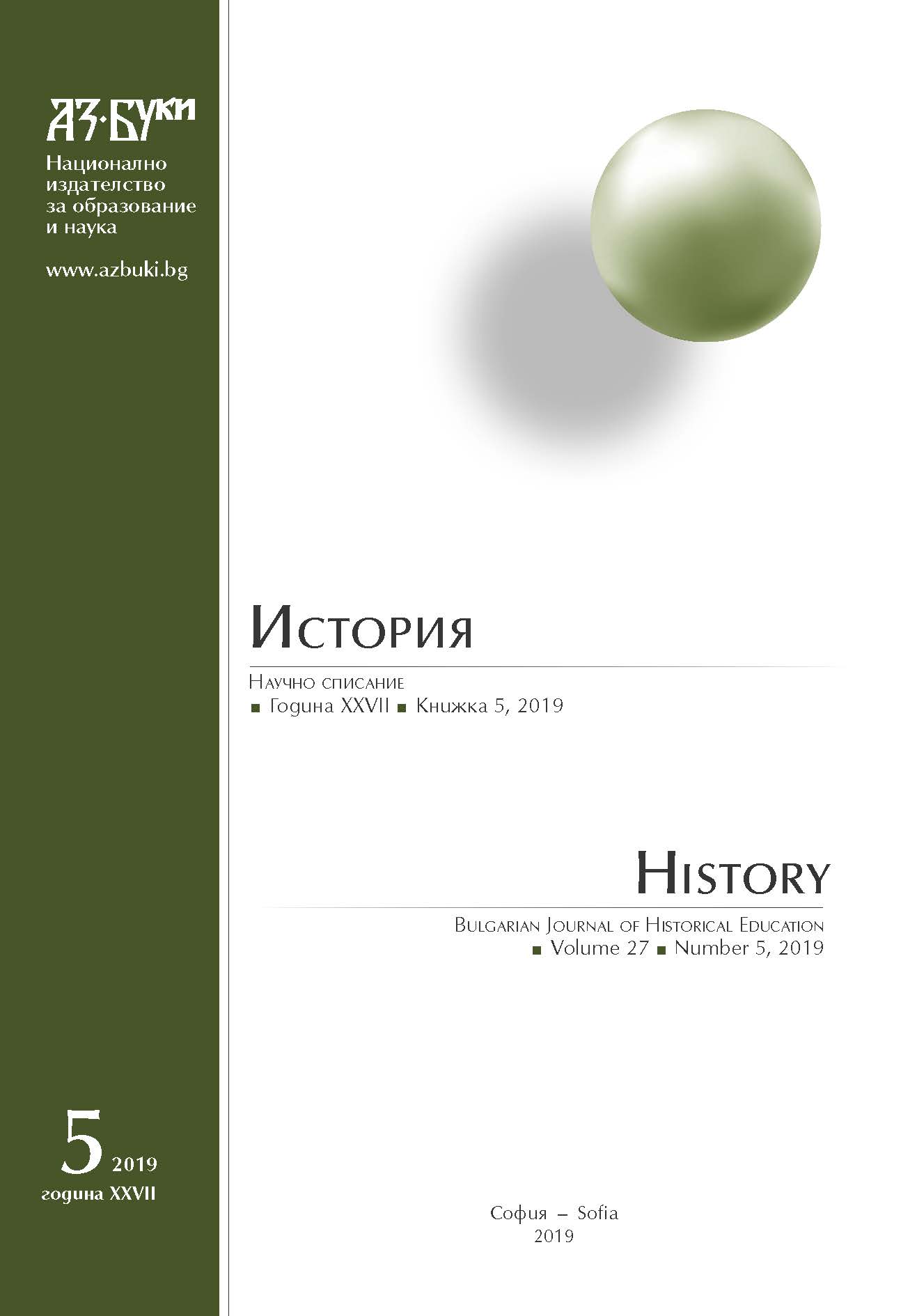
The article presents inception and the first months of the functioning of the underground Polish Socialist Party occurring in 1939-1944, under the code name “Wolność-Równość-Niepodległość” (Freedom-Equality-Independence). Its hows both the pre-war preparations of the PPS and the way in which the PPS-WRN was formed at the beginning of October 1939, as well as the principles on which its organization was based. The article also discusses both the beginnings of the PPS-WRN underground press and the party’s place in the forming structures of the Polish Underground State.
More...
This article intends to answer two fundamental questions: 1) What kind of image of Poland was created by the authorities of the Soviet Union on the eve of and during the Soviet aggression against Poland on 17 September 1939? 2)Did Soviet society accept this image uncritically, or was it capable of creating its own image of Poland independently? This study is based on an analysis that the Soviet authorities created a false image of Poland as a fascist country which had been defeated by Germany not as a result of its military advantage but as a result of its incorrect policy towards ethnic minorities. The image of Poland was generally accepted by the society of the Soviet Union which was subject to a monopolistic propaganda of the state. Only a small minority of society rejected the image promoted by the authorities – as untrue and a justification for Moscow’s imperial policy.
More...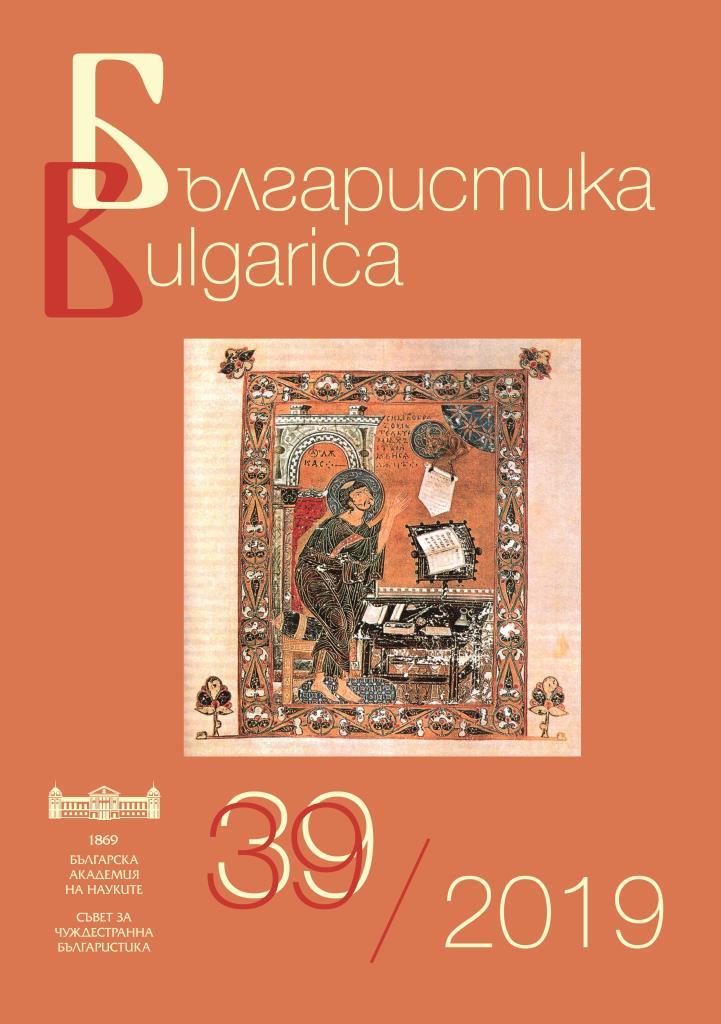
Content of the main Bulgarian scientific journals for the current year in linguistics, literature, history, folklore, ethnography, archaeology and art studies.
More...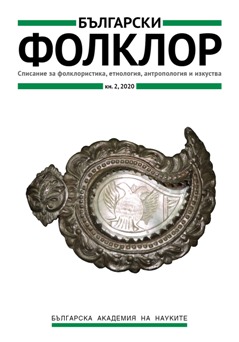
The article is dedicated to the Greek refugees, political emigrants, who arrived in Bulgaria in the middle of the twentieth century because of the Civil War in Greece (1946–1949). The author studies the reasons for the formation of the new community of people of Greek origin and the organizational structures that this community established with the cooperation of the Bulgarian state. Attention is drawn to the characteristic features and peculiarities of the community and the ways in which they influence its development. The focus is on the approaches for preservation and transmission of cultural tradition. The study also dwells on the development of specific set of regulations that allowed the development of amateur art among the Greeks in Bulgaria by the foundation of an educational structure and a network of clubs in the country. These activities are presented in relation with the cultural policies of the Bulgarian socialist state.
More...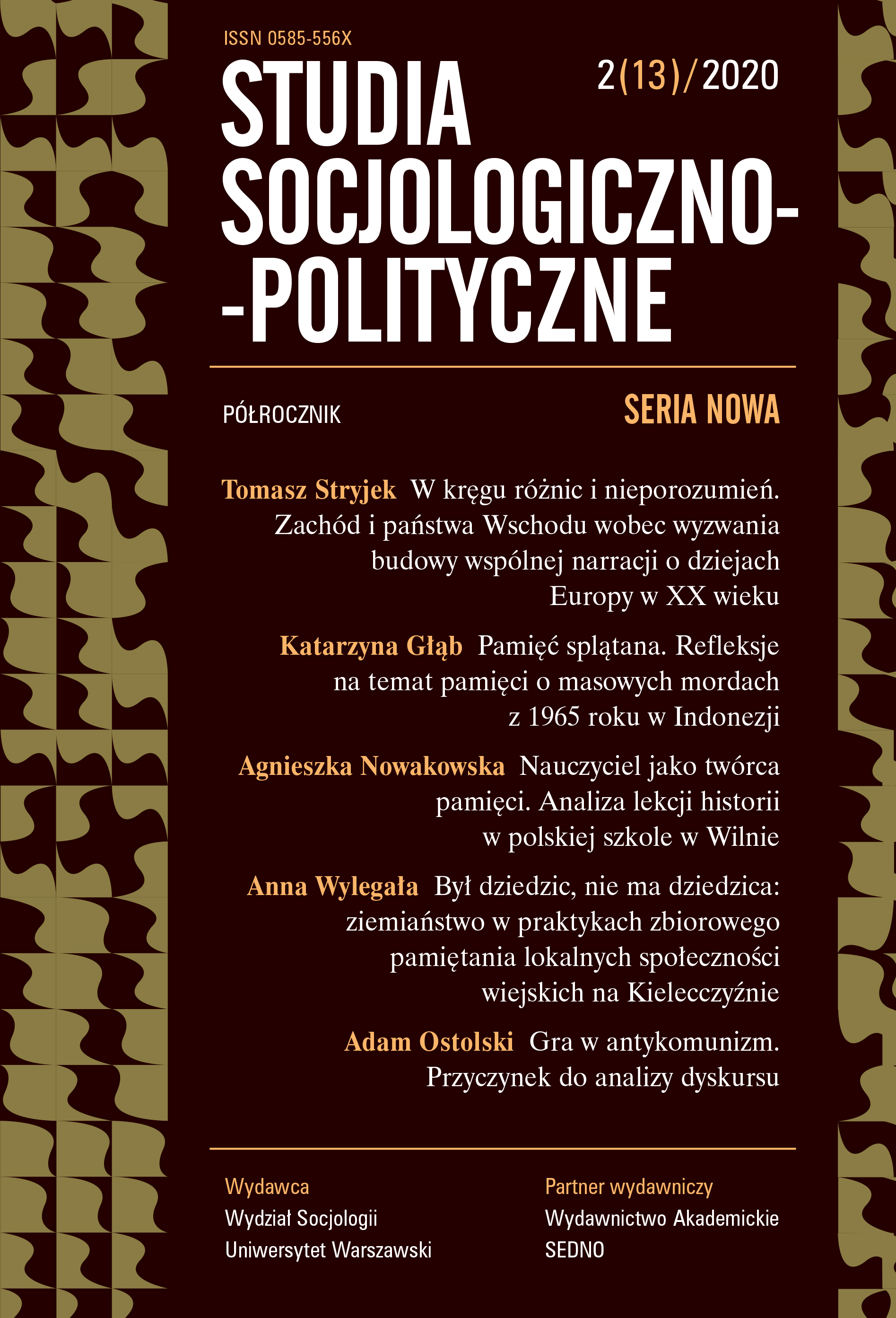
This paper focuses on one specific aspect of the Polish collective memory, namely – on the memory of the landed gentry and their expropriation from the Polish countryside conducted by the communist government in 1944. The communists expropriated the gentry, gave most of the land to the peasants and irreversibly changed social and economic structure of the Polish countryside. The paper analyzes how the very fact of the gentry’s historical presence and later expropriation is represented in the collective memory of the local village communities, and how it is used in the creation of the local memory scope and historical identity. The theoretical focus is on the acts of collective remembrance as understood in the work of Jay Winter, and then on the public aspect of the collective memory. Grounded in extensive fieldwork, this paper focuses on the case study of two villages which give examples of particularly active commemorative practices connected with the symbolic legacy of the expropriated landowners.
More...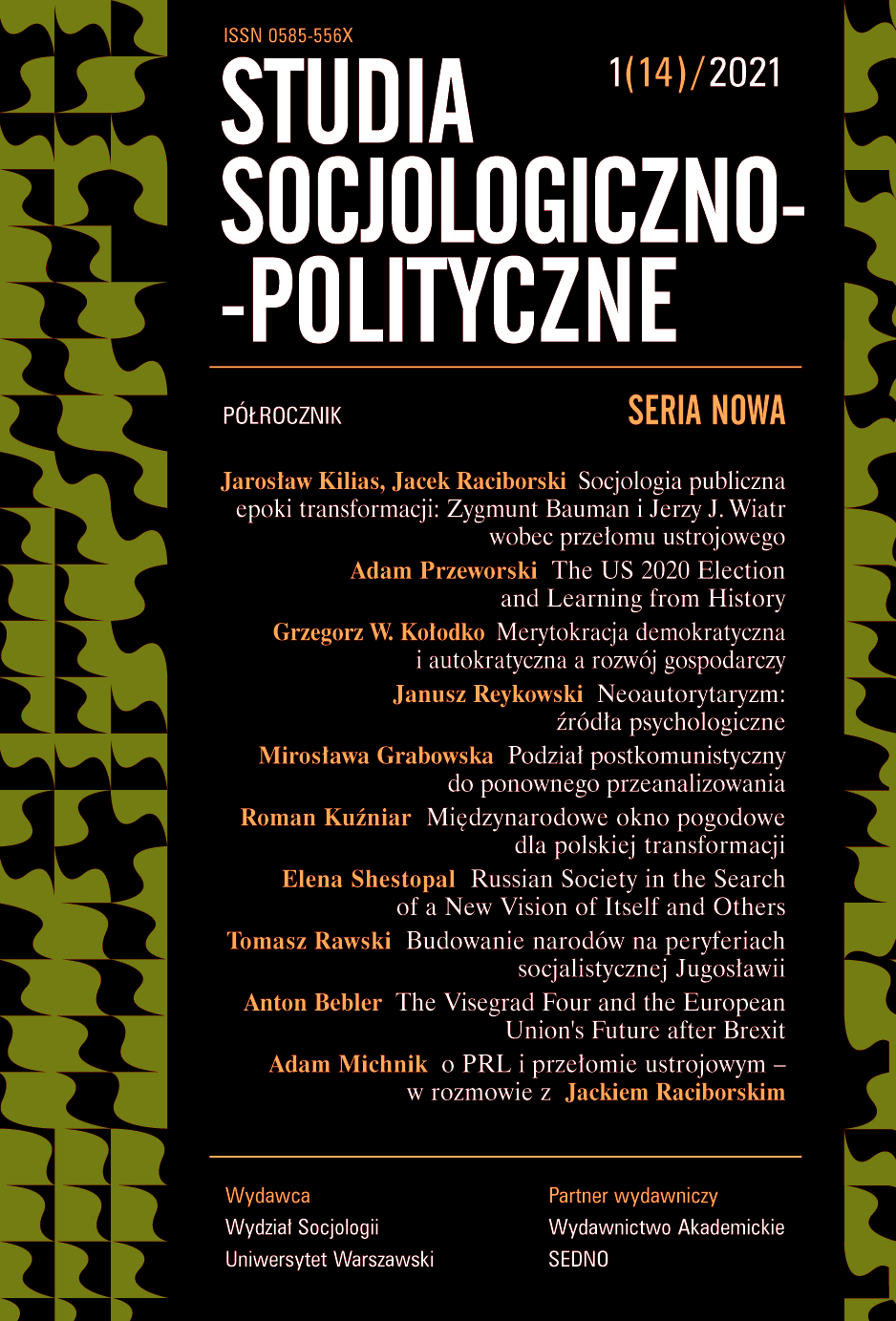
Some reminiscences of Adam Michnik on Jerzy J. Wiatr and Zygmunt Bauman and some other public scholars at the time of the Polish People’s Republic and after its peaceful demise in 1989/1990. Main topics of the discussion between Adam Michnik and Jacek Raciborski concern the dynamics of the social and political changes that led to the regime change, the tension between their spontaneity and their conceptualization, social and psychological contexts of decision making at that time, and the issue of responsibility of people handing over power peacefully: if and how let them be a part of the transition without punishing them for previous crimes.
More...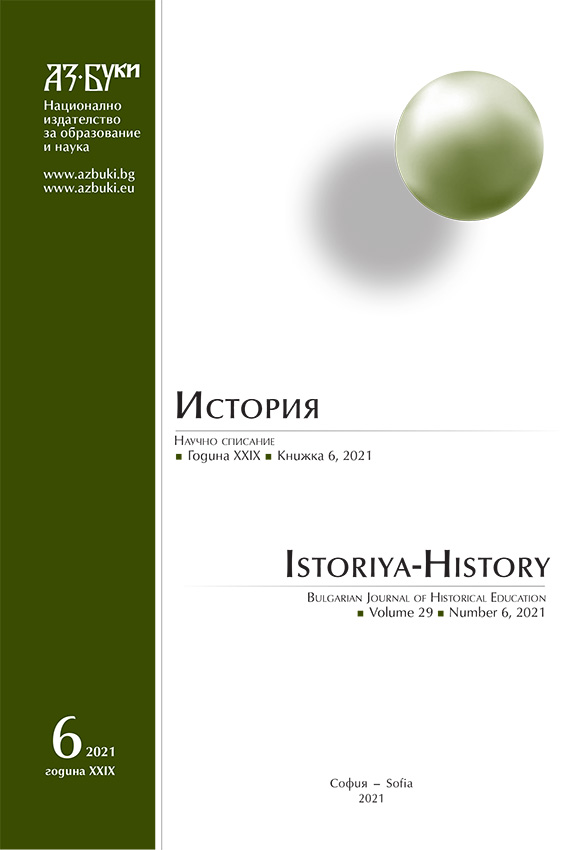
Based on the analysis of the sources and academic literature, the article comprehensively presents a critical analysis of the activities of the Bulgarian Blagoev Commune. The article covers the details of the organisation and functioning of the collective, the tasks set by the Bolshevik authorities. The article characterises the process of adaptation to a different country, the relations of the members of the commune with the local population and ties to Ukrainian associations. The results and consequences of the economic and financial activities of the international commune on the territory of Ukraine are generalised. The authors draw attention to the fact that the conscientious work of the members of the commune was used by the political regime under the slogans of building a bright future for the sake of an unrealistic socialist goal. Special focus is put on the party and public activities of the members of the commune. The contradictory nature of the position of the Soviet government regarding the newly created collective, the evolution of its party and state policy and the tragic fate of the leadership of the commune in the 1930s are discussed. The article outlines the recommendations on the practical application of the historical experience of the international collective in the context of international cooperation.
More...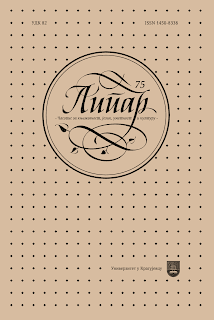
The goal of this paper is to investigate the memory of the Holocaust, i.e. the reception and representation of the suffering of the Jewish population during the rule of the Third Reich (under Nazi rule and occupation) in the capitals of the states constituted after the Second World War - in East Berlin, GDR, and Belgrade, SFRY, during the period from 1945 to 1989/1991. Relying on the achievements of memory studies and analyzing the political moods of that time and the ways of constructing official narratives about Jewish suffering in selected post-war Communist countries, the similarities and differences in the policy of representing Jewish suffering in these two countries and the memory of Jewish victims in places of remembrance and in the practices of remembrance in their capitals will be pointed out.
More...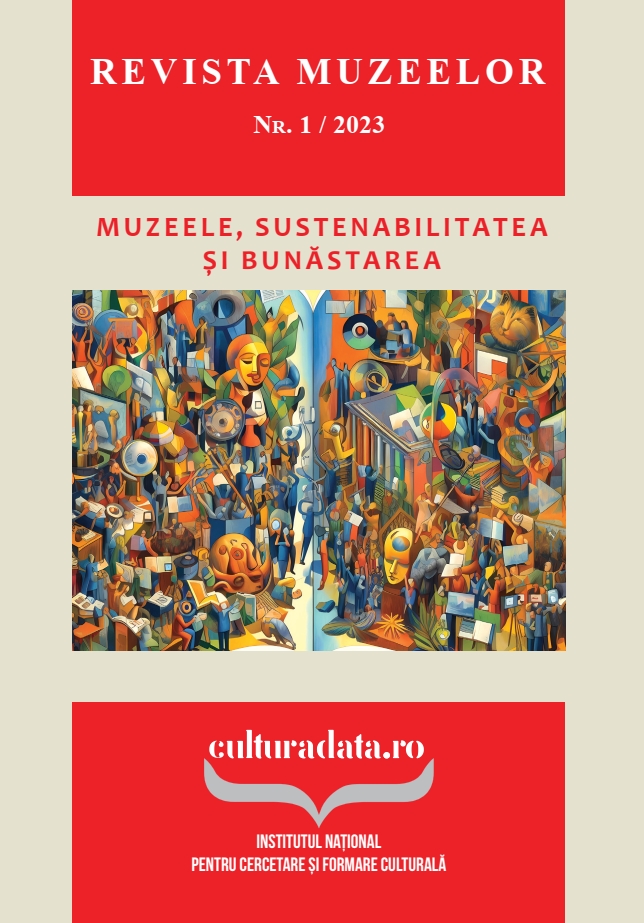
This review aims to bring together two private museums whose theme is largely similar: life in a communist country. The exhibition of the Museum of Memories from Communism in Brașov responded to the shortcomings in Romanian state-owned museums to cover a timeframe from recent history. To put the exhibition into perspective, after I present it and consider its museological features, I briefly bring into discussion the DDR Museum from Berlin. I focus not only on the visible part of the two – that is, the exhibition, but I also go backstage after connecting with those responsible for these two private museological endeavors, in order to discern the collecting undertakings and their role in the wider frame of museums landscape in a former communist country. Finally, after my visiting experience with both exhibitions and an unwilling / unfortunate entanglement with communist practices that are still up and running (the almost-failure of having a form stamped), I reflect on the role of a museum in providing deeper understanding of socio-cultural practices that affect our (not only institutional) lives up to our days.
More...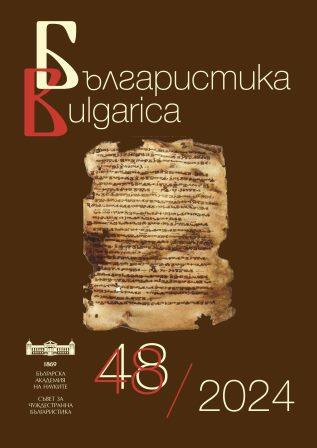
Selected bibliography in the field of Bulgarian Studies published in the current year.
More...
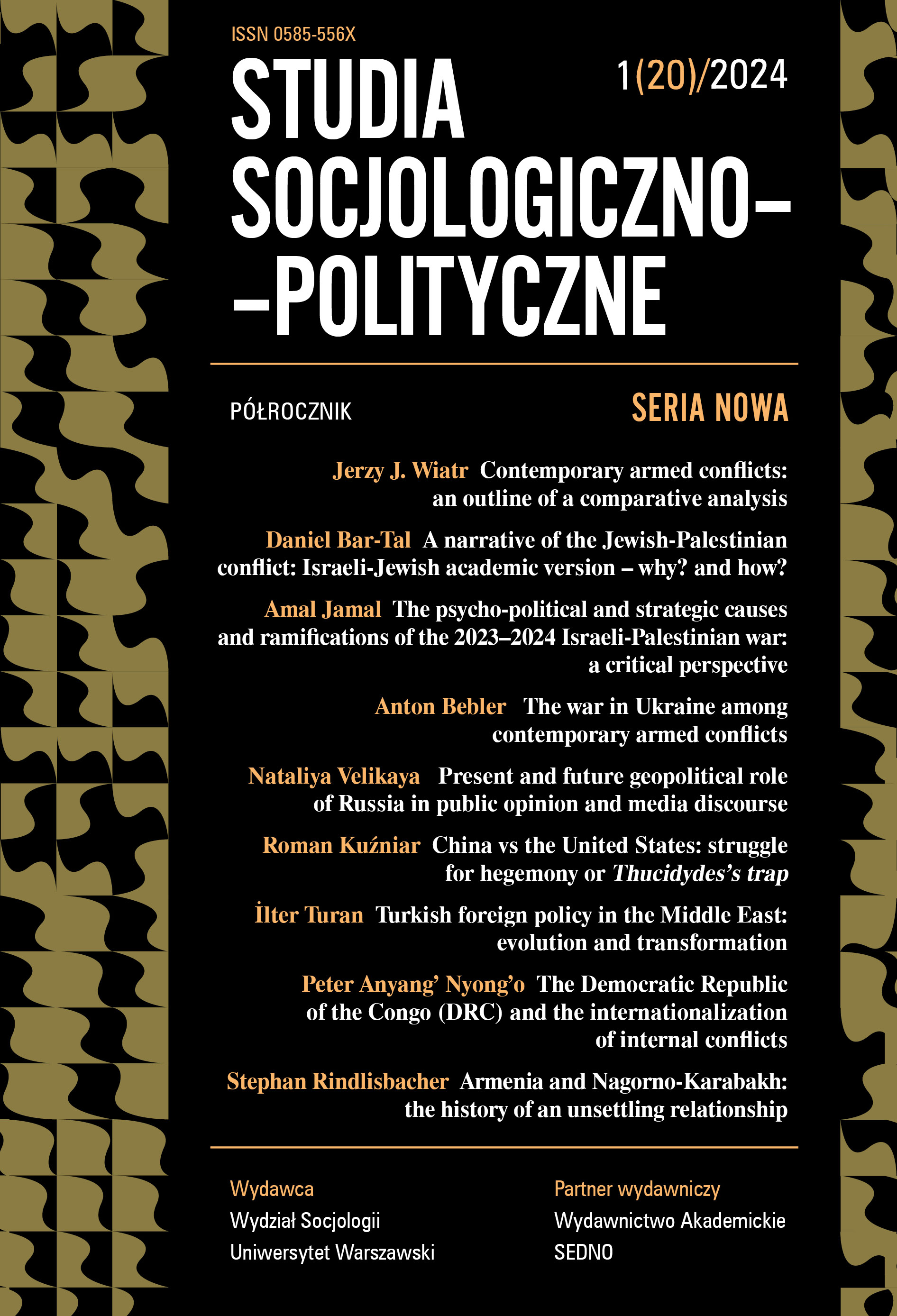
The Armenian-Azerbaijani conflict has been a visible constant on the international stage since 1988. On the Armenian side, the commemoration of the genocide of 1915 and the Soviet decision to attach Nagorno-Karabakh to Azerbaijan in 1921 appeared to be the main drivers to produce and reproduce „groupness”. Whereas Armenian nationalist narratives had first been silenced and then mitigated during the Soviet era, they have become decisive since the dissolution of the USSR. Armenian ethnopolitical entrepreneurs exploited them to establish a new political legitimacy. With the wars in 2020 and 2023, the tide turned in favour of Azerbaijan, as it managed to reconquer Nagorno-Karabakh and expel its Armenian population. Now, Azerbaijan appears as the main driver of the conflict when it utters claims for a corridor to Nakhchivan through the Armenian territory.
More...